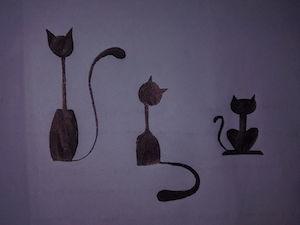BEVERAGE LAW
Supreme Court Reviews Question of What Constitutes an “Abstract Idea” in Patent Law

The U.S. Supreme Court recently heard arguments in Alice Corp. Pty. Ltd. v. CLS Bank Int’l, a dispute over a series of patents on computer processes used in financial transactions. Rulings in lower courts disagreed over whether the patents in question primarily involved abstract ideas, which are not eligible for patent protection. 35 U.S.C. § 101. The Federal Circuit Court of Appeals ruled that the patents are valid, reversing the district court’s ruling. A plurality opinion offered guidance on whether a claim involves an abstract idea under § 101. The Supreme Court agreed to hear the case, making it the court’s first case involving software patents since Gottschalk v. Benson, 409 U.S. 63 (1972).
Alice Corporation owns four patents on methods, including computer programs, for managing risk in certain financial transactions. The company claimed that CLS Bank began using similar technology in 2002. It notified CLS Bank, and they discussed licensing Alice’s patents. CLS Bank sued Alice in federal court in Washington, DC in 2007, seeking a declaratory judgment that it had not infringed Alice’s patents, and that the patents were invalid and unenforceable.
The district court held that the patents were invalid. CLS Bank Int’l v. Alice Corp. Pty. Ltd., 768 F.Supp.2d 221 (D.D.C. 2011). The subject matter of the patents was unpatentable under § 101, according to the court, which cited Bilski v. Kappos, 130 S.Ct. 3218 (2010). That case involved patents involving business methods used in commodities trading. The Supreme Court ruled that the patents were invalid under § 101, but declined to embark on a further examination of “what constitutes a patentable ‘process.’” Id. at 3231.
Alice appealed to the Federal Circuit, which ruled 2-1 to reverse the district court. CLS Bank Int’l v. Alice Corp. Pty. Ltd., 685 F.3d 1341 (Fed. Cir. 2012). It held that it was not “manifestly evident” that the patent claims covered an abstract idea, and that a plaintiff must show that “the single most reasonable understanding” of a claim is that it only covers a “fundamental truth or disembodied concept.” Id. at 1352.
After an en banc rehearing, a very divided court affirmed the decision. CLS Bank Int’l v. Alice Corp. Pty. Ltd., 717 F.3d 1269 (Fed. Cir. 2013). A plurality opinion, which was one of six, devised two tests to determine whether a patent claim was primarily an “abstract idea.” The first test seeks to identify the “fundamental concept” at issue in the claim:
- Does the claim fit one of the four § 101 classes: “process, machine, manufacture, or composition of matter”?
- Does the claim risk preempting an abstract idea?
- What is the “fundamental concept” appearing in the claim?
- Is there any human contribution to the subject of the claim? The court called this the “inventive concept.” Id. at 1282-83.
The second test evaluates the human contribution to the claim, which must be “more than a trivial appendix to the underlying abstract idea.” Id. at 1283. The test considers whether the human contribution is essential to every use of the abstract idea, and whether the claim unreasonably limits others from use of the idea. Id. at 1283-84.
Korngut Paleudis LLC’ intellectual property attorneys have represented clients in New York, New Jersey, and Connecticut for more than 45 years. To speak with a knowledgeable and experienced advocate, please contact us today through our website or at (212) 835-6768 in New York City.
More Articles:
“Patent Troll” Reaches Settlement with New York Attorney General While Suing Federal Government, New York Business Litigation Lawyer Blog, March 28, 2014
Federal Circuit Rules on Claim Construction in Patent Infringement Case, New York Business Litigation Lawyer Blog, March 7, 2014
Court Dismisses $2 Billion Patent Infringement Lawsuit Against Apple Involving Mobile Network Technology, New York Business Litigation Lawyer Blog, March 5, 2014
Photo credit: By Netha Hussain (Own work) [CC-BY-SA-3.0], via Wikimedia Commons.


